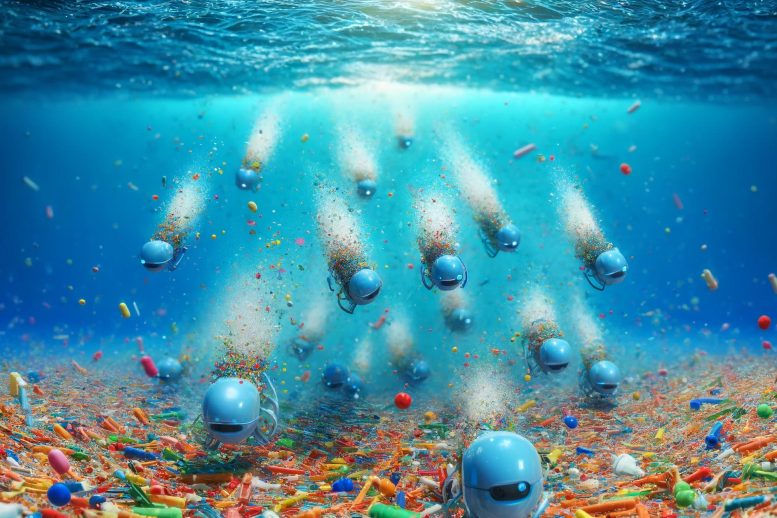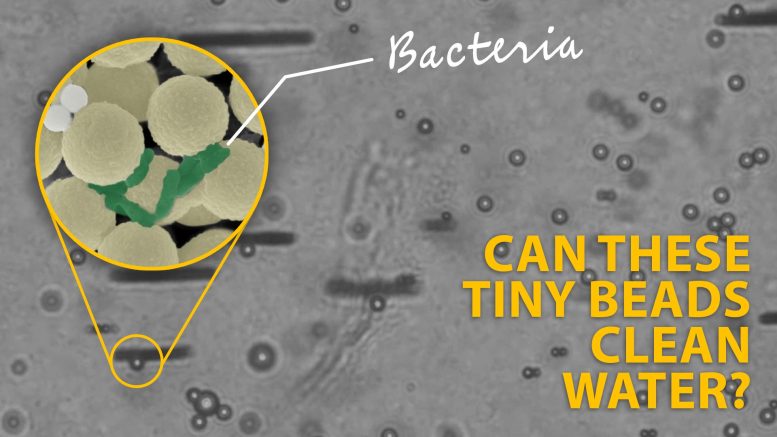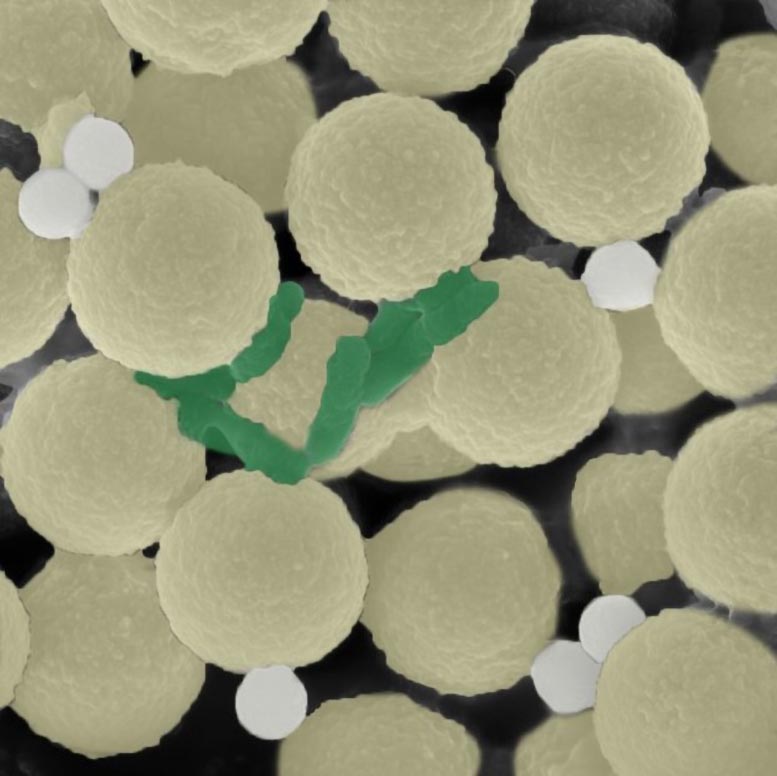
Innovative microrobots designed to mimic natural swarms can effectively remove both microplastics and bacterial contaminants from water, offering a reusable solution to water pollution. (Artist’s concept.) Credit: SciTechDaily.com
Researchers have developed microrobots capable of removing microplastics and bacteria from water, addressing the dual threat of pollution and disease spread in aquatic environments.
When old food packaging, discarded children’s toys, and other mismanaged plastic waste break down into microplastics, they become even harder to clean up from oceans and waterways. These tiny bits of plastic also attract bacteria, including those that cause disease. In a study in ACS Nano, researchers describe swarms of microscale robots (microrobots) that captured bits of plastic and bacteria from water. Afterward, the bots were decontaminated and reused. Watch a video of them swarming:
Reporting in ACS Nano, researchers made tiny magnetic beads that swarm through contaminated water picking up contaminants like microplastics and bacteria.
The size of microplastics, which measure 5 millimeters or less, adds another dimension to the plastic pollution problem because animals can eat them, potentially being harmed or passing the particles into the food chain that ends with humans. So far, the health effects for people are not fully understood.
However, microplastics themselves aren’t the only concern. These pieces attract bacteria, including pathogens, which can also be ingested. To remove microbes and plastic from water simultaneously, Martin Pumera and colleagues turned to microscale robotic systems, comprised of many small components that work collaboratively, mimicking natural swarms, like schools of fish.

To clean water, researchers have designed swarms of tiny, spherical robots that collect bacteria and small pieces of plastic. Credit: American Chemical Society
To construct the bots, the team linked strands of a positively charged polymer to magnetic microparticles, which only move when exposed to a magnetic field. The polymer strands, which radiate from the surface of the beads, attract both plastics and microbes. And the finished products — the individual robots — measured 2.8 micrometers in diameter.
When exposed to a rotating magnetic field, the robots swarmed together. By adjusting the number of robots that self-organized into flat clusters, the researchers found that they could alter the swarm’s movement and speed.

To clean water, researchers have designed swarms of tiny, spherical robots (light yellow) that collect bacteria (green) and small pieces of plastic (gray). Credit: Adapted from ACS Nano 2024, DOI: 10.1021/acsnano.4c02115
In lab experiments, the team replicated microplastics and bacteria in the environment by adding fluorescent SciTechDaily